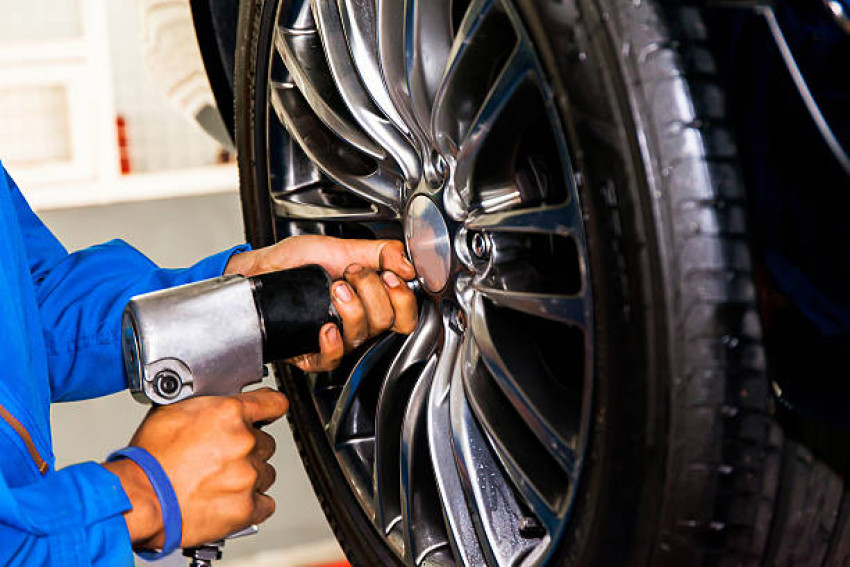
Tyres are at the peak of their performance when they touch the road surface for the first time. Old tyres are not efficient because of the effects of various factors. High-grade tyres show proper endurance against weather and road conditions. However, even high-class tyres are not invincible. They conquer weather and road conditions for a long time and keep you safe from risk factors. After a certain time, they become unable to beat harsh driving conditions and face several issues like cuts, punctures, tread wear and bulges.
In this blog, we are going to talk about the efficiency of new and old tyres. New Dunlop Tyres Andover come with optimum gripping ability. Therefore, they hold the road surface even at high speed. Moreover, the cornering ability of a vehicle depends on the efficiency of the car tyres as well. Low efficiency of car tyres will affect the performance and efficiency of the vehicle as well.
Tyres come with a certain retirement age. You can calculate the total age of your tyres by looking at the manufacturing date that is printed on the tyre sidewall. According to the manufacturers, you have to change your tyres after 6 to 10 years. At this time, tyres are not as efficient as they were in their initial years.
You have to replace your old tyres with new tyres because of the issue of efficiency. Old tyres are not efficient because of poor gripping power, longer braking distance, and poor handling.
The following factors suck the efficiency level of car tyres over time:
Road surface:
Tyres run on both uneven and even road surfaces at high speed, The movement of car tyres on the road creates heat and friction. These factors are common to degrade the rubber material of car tyres. The level of friction depends on the texture of the road surface. Harsh road conditions create more friction and heat to promote rubber degradation.
Heat:
Environmental heat during the summer season degrades tyre rubber. Moreover, hot road surface plays their role in reducing the efficiency of car tyres at the same time. Moreover, heat increases the level of air pressure in tyres to change their behaviour on roads as well.
Sharp and hard objects:
Iron nails and similar objects can penetrate the tyre rubber easily. As a result, tyres fact punctures and blowouts to cause serious problems for car drivers. Similarly, hard objects like kerbs also damage the tyres internally to cause problems like sidewall bulges.
Bad weather:
Bad weather is also a common factor to degrade car tyres. Changing ranges of temperature weakens the chemical bonds of rubber to promote degradation. Moreover, the presence of snow, slush, water and black ice is also enough to increase risky conditions for car tyres.
Ageing:
Ageing is a natural process that takes place in tyres because of the degradation of tyre rubber. Old tyres generally show cracks on their sidewall. These cracks show that your tyres are ageing and you need to change them as soon as possible. Factors like heat and sunlight also increase the rate of ageing in tyres.
Signs that show serious condition of car tyres
As you see, several factors affect tyres negatively. Because of these factors, tyres show different signs that are enough to make it clear that your tyres are near their end.
One of the most common signs of dying tyres is tread wear. Tread depth is a vital element of car tyres. Old tyres lose tread depth because of factors like heat, friction, wrong air pressure, and wrong wheel alignment.
Cracks are another common sign of inefficient tyres. Tyres show cracks on their sidewall when their rubber material is hard and brittle and it cannot hold the road surface effectively.
Tyres may also have bulges on their sidewall because of internal weakness and leakage of air. The presence of bulges on the tyre sidewall increases the risks of tyre blowouts. Therefore, you must change them instantly.
Why should you change your old tyres?
Wise drivers maintain their tyres to use them for a long time. At the same time, they do not wish to use their tyres for more than their normal lifespan if the tyres are near retirement.
Tyres come with a certain time to serve your car. This is your right and duty at the same time to maintain them appropriately. At the same time, you must change them when you observe the danger signs.
If you do not change your old and bald tyres, you can face the following negative effects:
Your tyres would not hold the road surface even in normal road conditions. Moreover, they would not support you in wet conditions because of their inability to displace rainwater.
Old tyres are prone to punctures and blowouts because of low tread depth. A soft and thin rubber wall is an easy target for sharp objects in the absence of tread blocks.
Old and bald tyres would not stop your vehicle at the correct distance and they would not support you well when you try to turn your vehicle.
Slipping of tyres would be normal even if you are driving on bald and faulty tyres.
Wrapping up:
Tyres are important for your car's overall performance. therefore, you must keep at the peak level of efficiency and strength. Since old tyres cannot be strong and efficient on roads like new tyres, you must change your tyres after the recommended period. If you do not have time to visit a dealer to change your tyres, you can easily call a service for Mobile Tyre Fitting Andover. After your call, a mechanic will come to your office or home with a mobile van to fix the issue.



